Estimated reading time: 12 minutes
Disclaimer: I am not a medical doctor and nothing in this article should be taken as medical advice. Please talk to your doctor before using any of the herbs and/or remedies mentioned in this article.
A great way to prepare for difficult times is to grow your own medicinal herbs. But what if you live in an area that doesn’t receive a lot of sunlight? Or what if you have a backyard with lots of trees and other things that cast large shadows?
It might be surprising, but even if you have a very shady space, you can still grow lots of herbs with medicinal benefits. In fact, there are at least 17 medicinal herbs that grow well in the shade.
Want to save this post for later? Click Here to Pin It On Pinterest!
Here they are…
1. Anise Hyssop
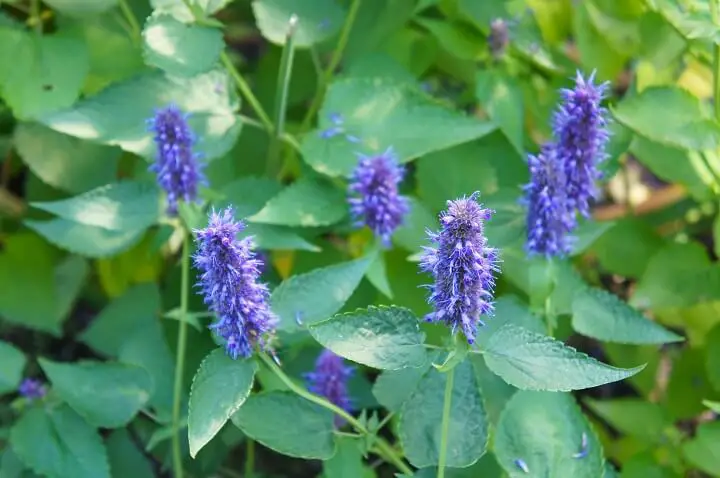
Anise hyssop, also known as Agastache foeniculum, is a member of the mint family. Herbalists have been known to use this short-lived perennial as a tea to treat colds. It was also used in salves for its antibacterial properties.
Although Anise hyssop plants only last about three years, they will self-seed easily, giving you plenty of new robust plants each year. To start these plants from seed, they must be cold stratified. You can either plant the tiny seeds in the garden in the fall to lie dormant for the winter or place them on top of damp soil and keep them in the refrigerator for about a month before germinating.
2. Black Cohosh
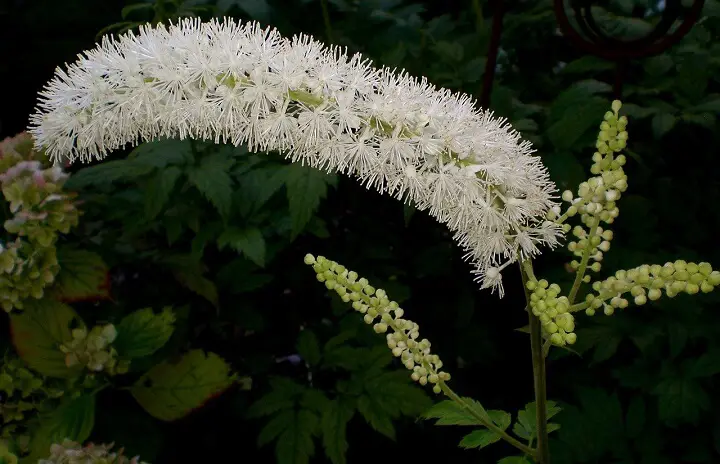
Native Americans once used black cohosh to treat menstrual and menopausal issues. It was also called black snakeroot because it was used to treat snake bites. This bushy perennial is native to the woody forests of eastern North America. High doses of this herb can have serious side effects.
Black cohosh can be started from seed but grows best when grown from divided rhizomes. It prefers rich soils and shady to partly shady locations. It will grow well in damp and even poor-draining soil. It grows anywhere from five to eight feet tall.
3. Catnip
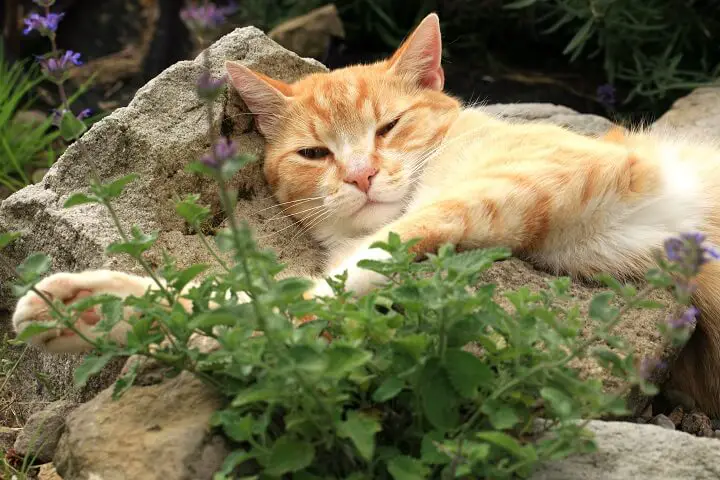
In folk medicine, catnip tea has been used to promote relaxation and reduce anxiety. It may also be used for colds and headaches. And of course, cats love it, too. This ornamental herb grows two to three feet tall and produces pretty flowers.
To grow catnip, you’ll want to soak the seeds overnight. Under ideal conditions, the seeds will germinate in about two weeks. You can also grow catnip from transplants. You can cut the entire plant back after its first bloom and it will regrow for a second harvest.
Keep in mind that catnip is a naturalized and invasive species. Take care where you plant it because it could overtake your entire garden or flowerbed.
4. False Solomon’s Seal
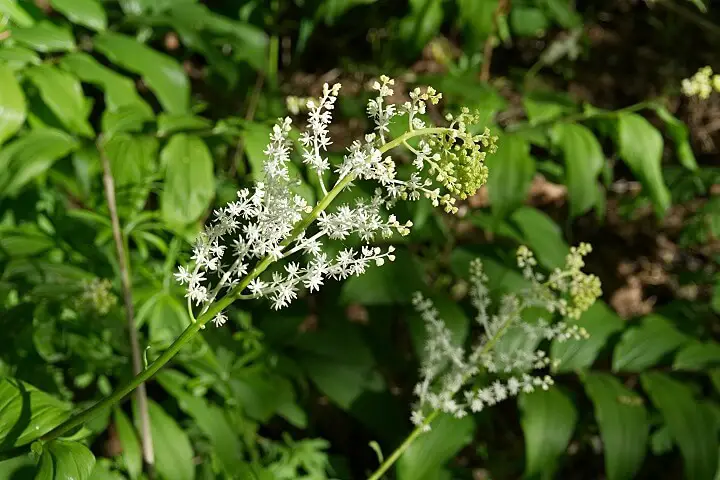
The dried roots of false Solomon’s seal were once used to make tea in folk medicine. The tea was used to treat everything from constipation to cough. The leaves can be made into a type of tea to be used topically for skin irritations, as well.
False Solomon’s Seal is a woodland plant that grows best in rich, acidic, and moist soils. Seeds can be planted in the fall or cold stratified in your refrigerator for a month before planting in spring. This plant will grow easily by division and prefers shade.
5. False Unicorn
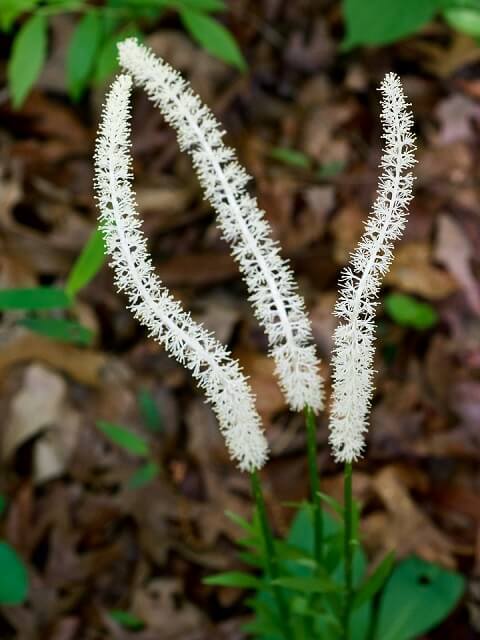
False Unicorn has been used in folk medicine to treat a number of disorders related to female hormones. Native American women once used it to prevent miscarriages.
False unicorn can be grown from seed but will become established more quickly when grown from a rhizome. Rhizomes can be divided in fall or even early spring. This perennial grows best in moist, acidic soil in full to part shade.
6. Feverfew
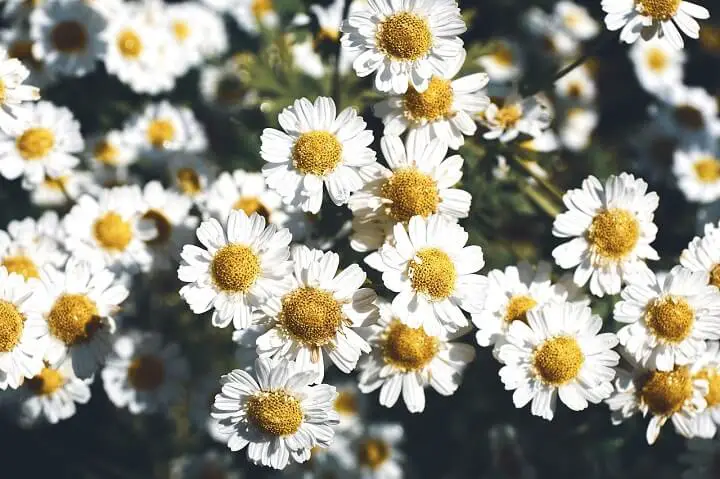
Feverfew, or Tanacetum parthenium, is a species of chrysanthemum. Traditionally, it was used to treat fevers, arthritis, and even headaches. Feverfew can be grown as an annual or even a short-lived perennial. It grows pretty flowers on a bushy habit, which makes it a great addition to any ornamental or herb garden. It prefers full sun but will grow well in light shade.
Feverfew can be started inside and transplanted into the garden when the plants are about three inches tall. If feverfew is grown inside or in very shady areas, it may get leggy, but it will still provide the same benefits.
7. Ginseng
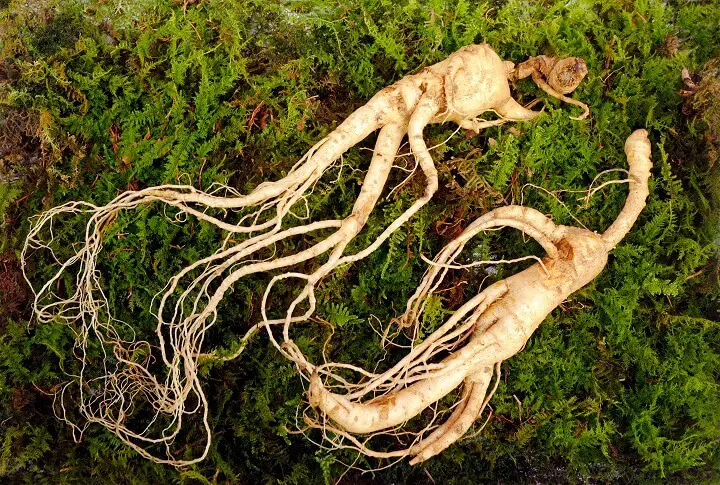
Ginseng is a slow-growing plant used in ancient Chinese medicine. It is thought to reduce inflammation and improve brain function. It may also boost the immune system and increase energy.
Ginseng prefers to grow in the shade and will do well underneath trees. It prefers moist, well-draining soil. You may want to plant your ginseng seeds in the fall for spring growth. However, it grows best from roots. It can take five years or more for ginseng to grow into a usable size.
8. Goldenseal
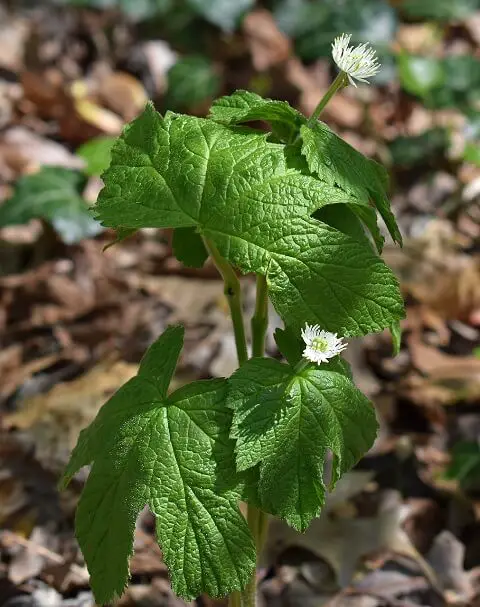
In folk medicine, goldenseal is used for stuffy noses and digestive issues. It is thought to have natural antibiotic properties, as well. Goldenseal could have serious side effects.
To grow goldenseal, select a spot with at least 75 percent shade. Goldenseal needs good drainage to grow. It grows best from rhizomatic roots, which should be planted about an inch deep. Goldenseal berries are not edible.
9. Lemon Balm
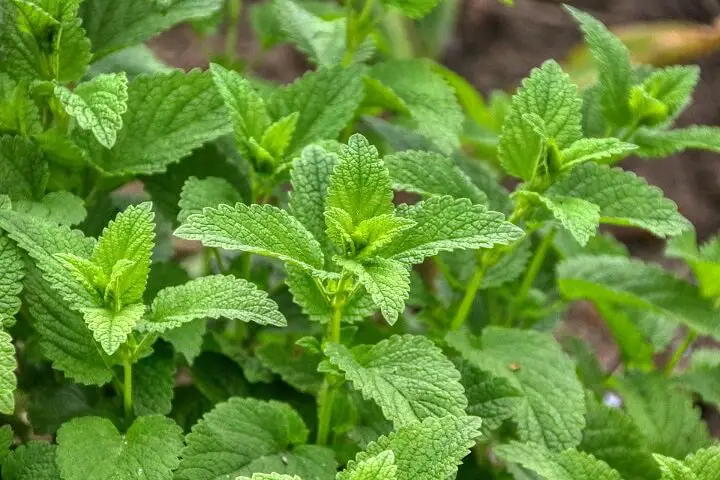
Although there is not enough scientific evidence to support medicinal claims, lemon balm has been used in folk medicine to treat stress, insomnia, and digestive issues, although it may have unpleasant and even serious side effects. Lemon balm can be brewed as a tea and used as a flavoring.
Lemon balm prefers to grow in at least part shade. Its inconspicuous flowers will self-seed, but it is not invasive. You can cut your lemon balm plant back several times throughout the growing season.
10. Meadowsweet
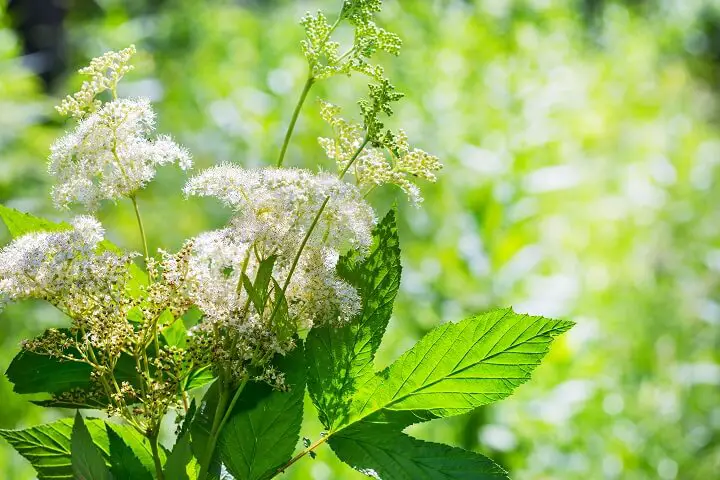
This member of the rose family has been used in traditional medicine to treat a variety of disorders such as bronchitis, colds, gout, and even stomach issues. Its sweet wintergreen fragrance was used to mask odors in the home. It makes a striking garden plant, as well.
Meadowsweet prefers to grow in partial shade with well-draining, moist soil. It will grow easily from seed, but transplants easily as well. In addition to its medicinal benefits, it looks pretty as the back border of an ornamental garden.
11. Oregon Grape
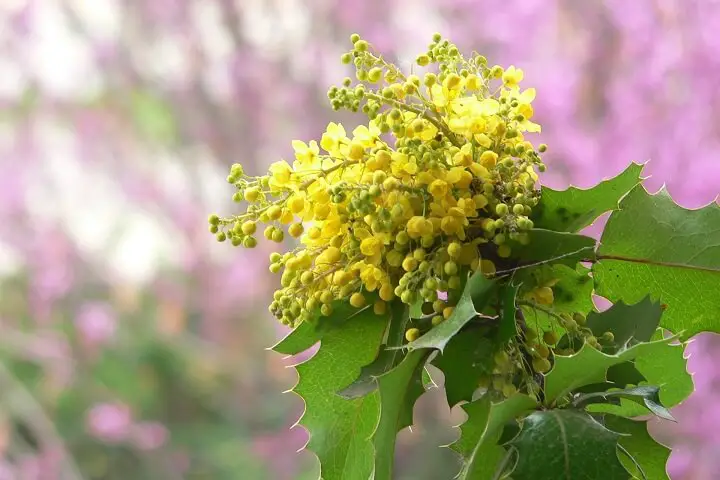
Oregon Grape is a bush-like, flowering perennial with tart, blue berries. It is native to the western United States. The roots and bark contain the chemical compound, berberine, which may fight bacterial and fungal infections.
Oregon grapes grow best in partial shade and slightly acidic soil. It will spread easily and grow from suckers, so pruning will help keep it under control. Its evergreen leaves will turn a reddish color in the fall, and in the spring it grows yellow flowers.
12. Peppermint
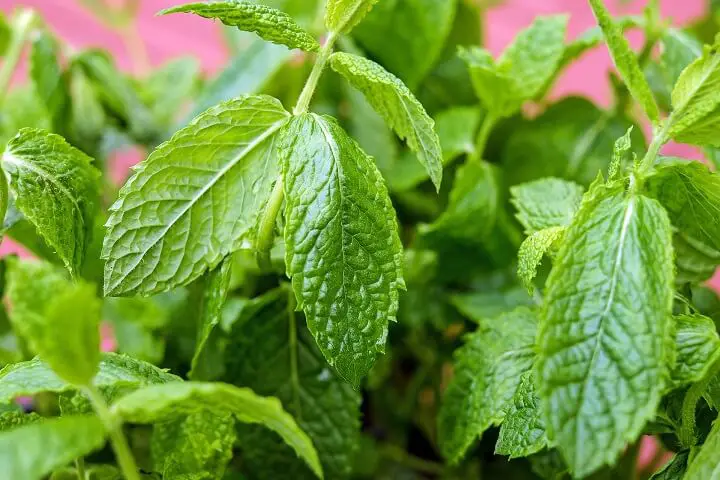
Peppermint is a popular and easy herb to grow. Peppermint is often used to soothe headaches and increase focus and concentration. It is very easy to grow and propagate and its purple flowers attract pollinators.
The best way to grow mint is to ask a neighbor for a clump from their garden. It will grow as a small bushy plant at first and then will spread rapidly through underground runners. Care should be taken to prevent it from taking over your garden or yard. Mint grows rapidly in full sun and part shade, however, variegated mint needs more protection from direct sun.
13. Trillium
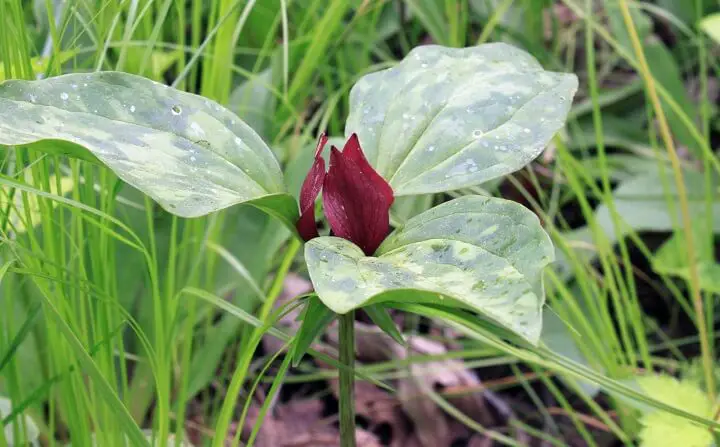
This perennial is native to North American woods. Native Americans had many uses for trilliums, including treatment of earaches, diarrhea, swelling, and even spasms. It was also used to support childbirth and help other hormonal issues.
Trilliums grow best in rich soil in part shade. However, the warmer the climate, the more shade they will need. Once established, trilliums are hardy and will not need much supplemental watering if grown in woody areas. You can plant rhizomes in early spring.
14. Valerian
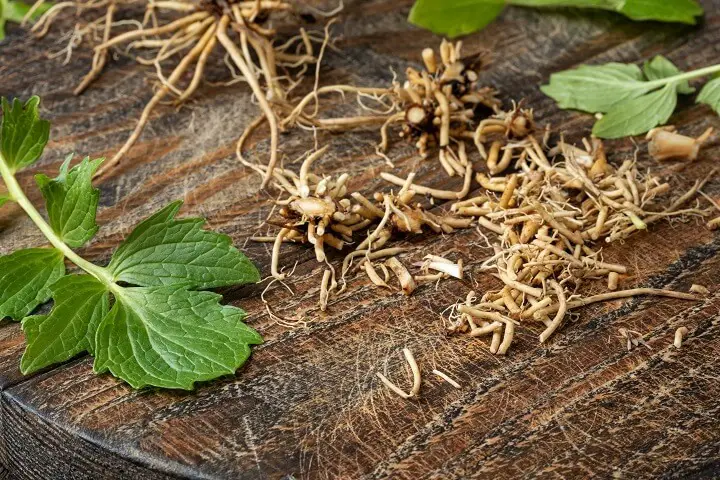
There is some controversy about taking valerian root for insomnia and anxiety. The roots and underground stems can be made into a tea, but this plant may interfere with some medications.
This cold-hardy perennial will die back every winter but will regrow from the roots each spring. To grow valerian root, you can direct sow the seeds as soon as all danger of frost is past, or you can start them indoors several weeks before this date. It will grow easily in a range of conditions, but it does prefer to be kept moist.
Consider mulching your valerian plants or watering frequently. Valerian self-seeds very easily, so you may need to control its spread, clipping off flower heads before they go to seed.
15. Wild Ginger
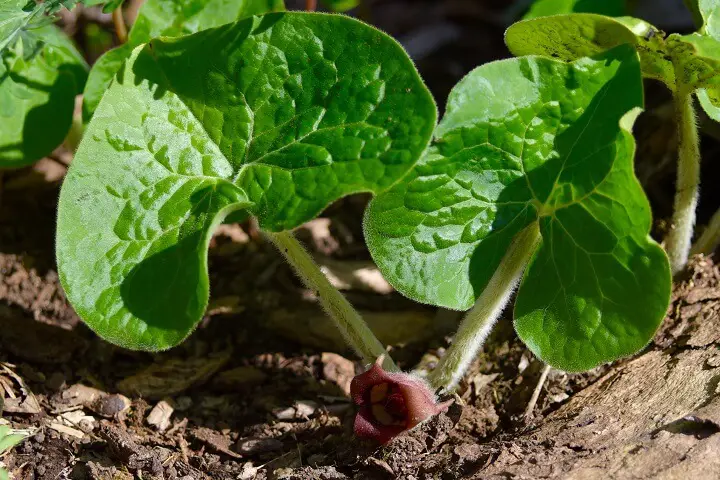
Wild ginger, or asarum canadense, is a hardy perennial in the birthwort family. Native Americans and early settlers used this herb to treat problems such as irregular heartbeats and earaches. When crushed, the plant gives off a fragrance similar to lemon ginger.
Wild ginger is slower to get established, but once it is established, will spread readily. It is low growing with striking foliage and hidden flowers. It needs rich, moist, and well-draining soil. It can tolerate a little morning sun but prefer moderate to deep shade.
16. Wild Yam
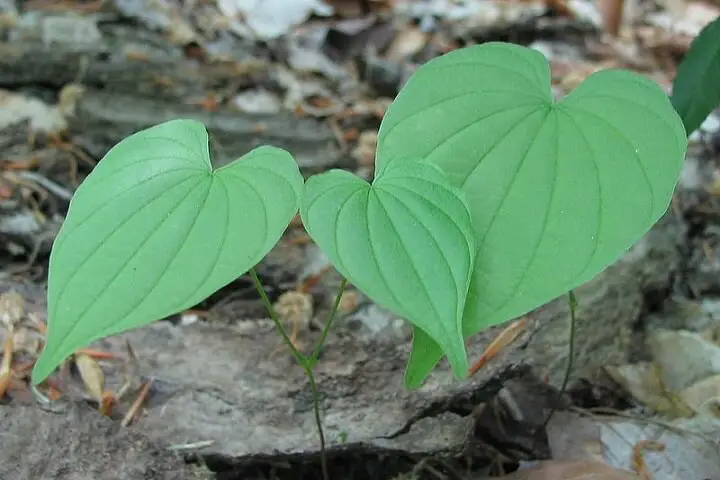
Wild yam, or dioscorea villosa, is a vining perennial. It was used in Native American and Russian folk medicine for hormonal disorders.
Wild yam is easy to grow once established. It prefers filtered light and rich soil. Wild yam is difficult to grow from seed and will take up to 4 years to mature. However, it grows easily from rhizomes or fall cuttings.
17. Wood Betony
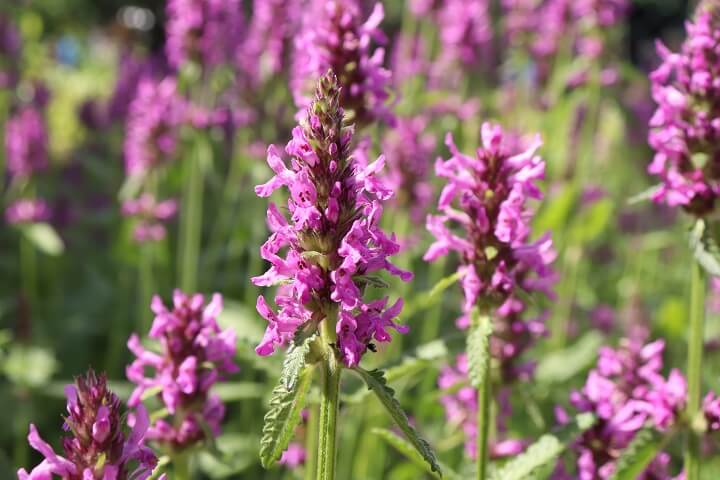
People in ancient Rome used wood betony to treat a wide variety of ailments. It was known for its calming properties, and its ability to soothe digestion and reduce inflammation. It is native to Europe.
Although wood betony is highly adaptable, it does prefer partial shade and rich, moist, well-draining soil. It can flower and fill in most shady areas, although it will grow more slowly in the shade than in full sun. It can be propagated by seed, cutting, and division.
Like this post? Don't Forget to Pin It On Pinterest!

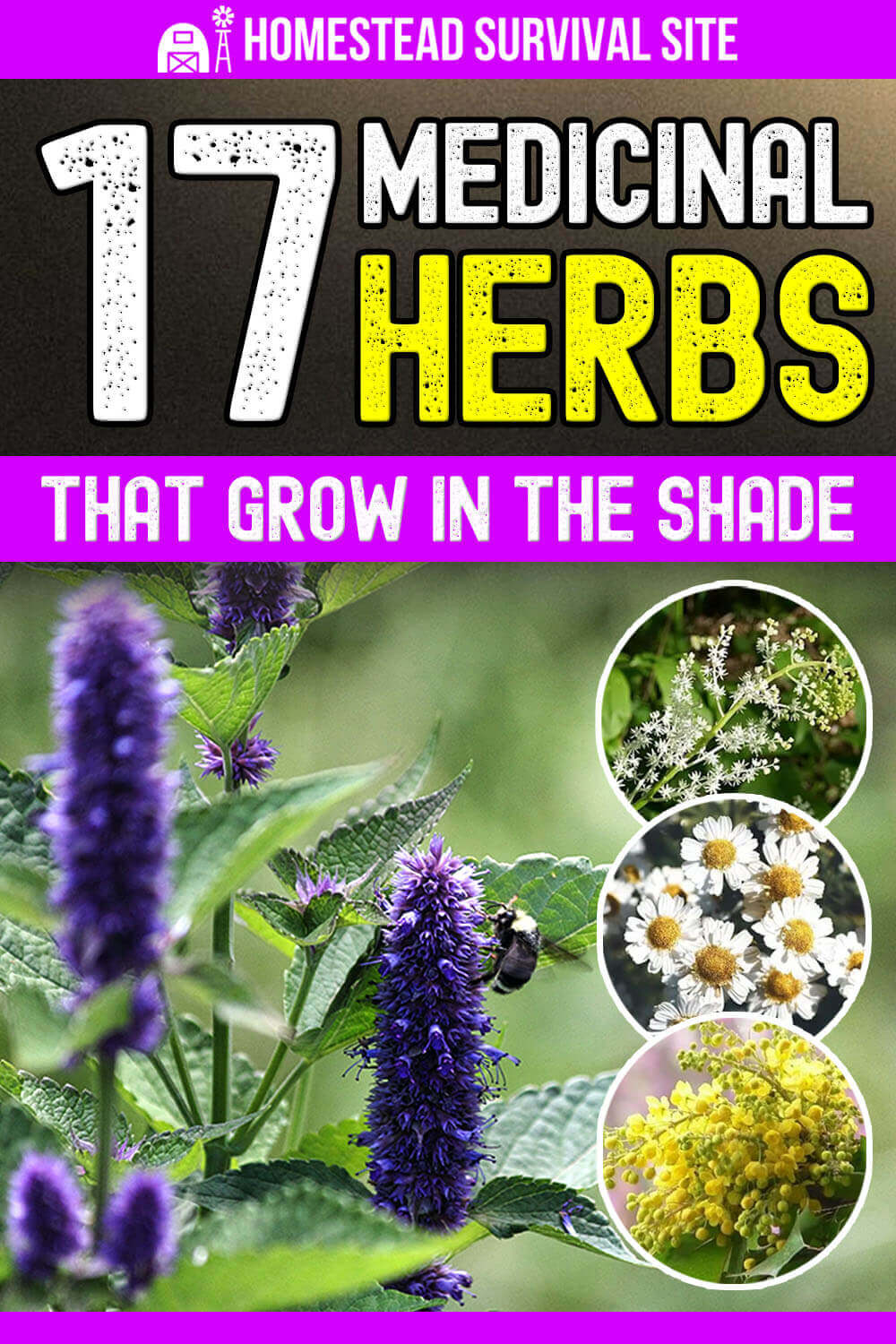


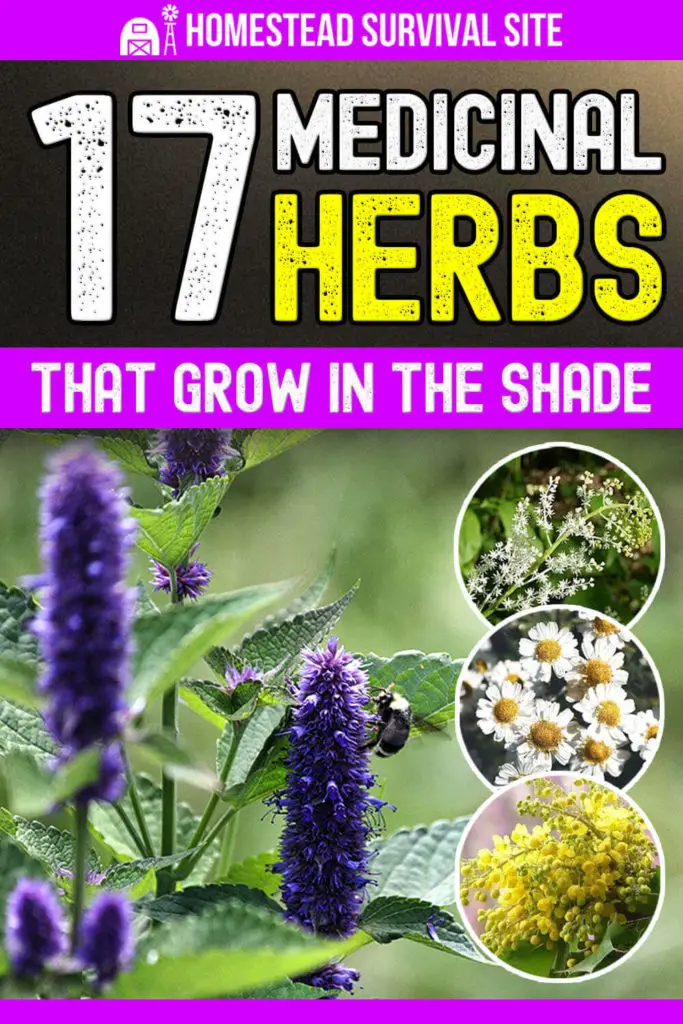








What are the Latin names? Common names are shared between so many plants, the Latin names are required for proper identification.